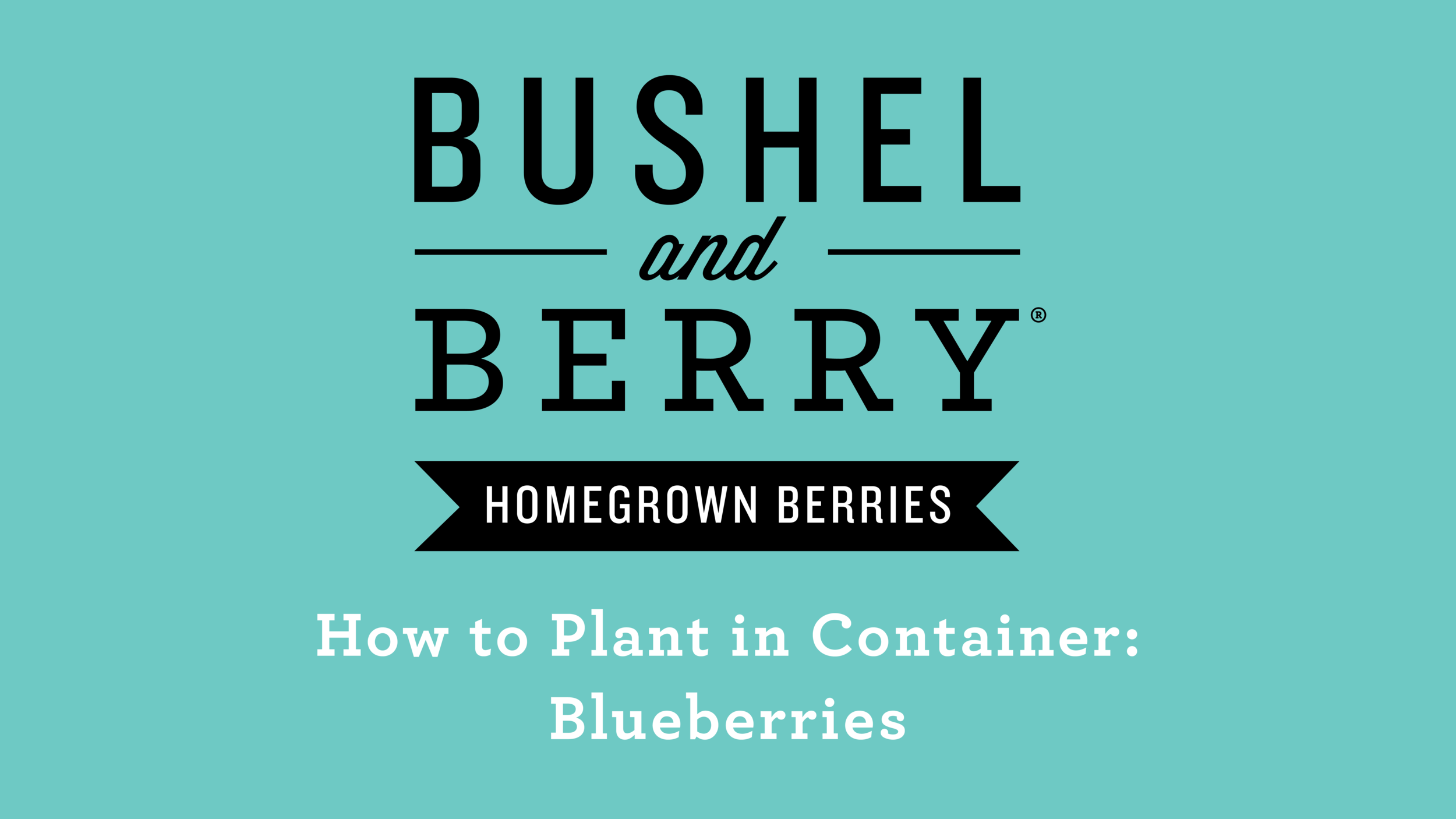Blueberries do best in an acidic soil with a pH balance of 4.5–5.5. You can either purchase acidic soil or test soil that you already have. If you have a pH balance higher than 5.5, you can incorporate peat moss into the soil which is acidic and can lower the pH balance.
All of the varieties in the Bushel and Berry® collection will thrive in patio pots, raised beds or in the ground for years to come. If you decide to plant your Bushel and Berry® Blueberry in a pot, we recommend choosing a container that is 12–16” in diameter to allow the plant room to grow.
plant In Container
Choose a container (12–16” in diameter and at least 10” deep is ideal).
Fill ⅔ of the container with regular potting soil.
Use a soil acidifier product as recommended, or use a high acid potting soil. Follow product instructions.
Mix potting soil and soil acidifier together.
Add plant to pot, gently loosening the roots of the plant.
Fill in soil around plant with regular potting soil (if needed).
Place plant in a sunny spot. It will need at least 6 hours of full sun each day.
Water the plant frequently, ensuring it stays moist but not overwatered.
plant IN GROUND
Pick a sunny place to plant. All berry plants need at least 6 hours of full sun to produce berries.
Dig a hole slightly larger than the container. Work the soil at the bottom of the hole with your shovel so that it’s loose and aerated.
Tip: Blueberries do best in an acidic soil with a pH balance of 4.5–5.5. You can either purchase acidic soil or test soil that you already have. If you have a pH balance higher than 5.5, you can incorporate peat moss into the soil, which is acidic and can lower the pH balance.
Remove the berry plant from its container. Use your hands to gently loosen the roots at the bottom of the plant.
Place your plant in the hole, ensuring that the base of it is level with the soil.
Add soil back to the hole around the plant. Crumble the soil so that it’s nice and aerated. If desired, mulch around the plant.
FERTILIZING
Bushel and Berry® plants do best when you fertilize them each spring. Blueberry plants like acidic fertilizers such as rhododendron or azalea formulations, and either granular or liquid fertilizers. They also prefer high-nitrogen organic fertilizers such as blood meal and acidic cottonseed meal. Fertilizing should be done in early spring and in late spring by closely following the product label instructions. Avoid fertilizing with any kind of manure as it can damage the plants.
Tip: Coffee grounds are an inexpensive homemade blueberry fertilizer to help acidify soil! Occasionally, scatter your spent coffee grounds on the top of the dirt to wake up your blueberry plants.
WATERING
The amount of water your blueberry plant needs will depend on your climate but generally, you want to make sure the plant has consistent moisture but isn’t overwatered. This usually means watering two to three times a week for blueberries planted in the landscape or raised beds and daily if it’s in a container.
Tip: If you live in an area where the water contains higher levels of calcium, add some vinegar to the plants’ water twice a week—about 6 ounces per 4 gallons of water.
Tip: Remember, plants and their roots in patio pots dry out faster than plants in-ground, especially on warm summer days. It's important to water potted plants daily. A good way to gauge your watering is to water until you see runoff coming out of the drainage holes.
PRUNING
Pruning your blueberry plants annually will ensure they add to your landscape and provide you with delicious berries. In spring, prune out any dead branches. Young plants will need minimum pruning. As the plant ages, prune out 1/3 of the older canes each year while the plant is dormant, leaving new branches to fruit the following season. Blueberries bloom and fruit on old wood, so be sure that you don't trim off too much of last season's branches or it will negatively impact fruiting.
Tip: Pruning off dead wood or non-fruiting wood will allow the plant to put its energy into the good canes for maximizing fruit production.
WINTER CARE
Bushel and Berry® varieties require little winter maintenance and can usually be left outside during cold months. However, plants in decorative containers and planters are more at risk than plants in the ground. If your plants are in the ground, it’s a good idea to mulch heavily around the base and give them extra water.
If your plants are in decorative containers and you have harsh winter weather, insulating the plant or moving the container to an unheated garage or basement is a good idea. If you store your containers in the garage, remember to protect them from the winter temperatures that can come in as you open and close the door. Keep your containers inside until the threat of the last frost has passed (typically in early spring). While storing the berry plants inside, make sure to keep the soil moist but not soaked.



